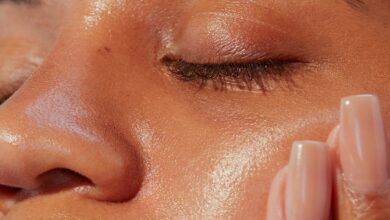Lifestyle
Queen Elizabeth II remembered in Hahoe Folk Village

UNESCO heritage-listed historic clan village commemorates deceased monarch’s visit in 1999
By Lee Hae-rin
Hahoe Folk Village, a historic clan community located in the southeastern city of Andong, North Gyeongsang Province, has set up a memorial space to pay tribute to Britain’s late Queen Elizabeth II. The centuries-old village has a special bond with the British queen who visited it during her trip to Korea back in April 1999.
Visitors offered flowers before a portrait of the queen, along with hundreds of notes wishing that she rest in peace. As of Monday, over 100,000 people visiting the historic village during the Chuseok holiday paid their condolences at the memorial space located in front of Chunghyodang, the main residence of the Ryu clan based in Andong, according to the city.
“We set up the memorial space by the fir tree that the queen planted during her visit to the village in 1999,” a village official told The Korea Times, Tuesday. “We, the villagers hoped to cherish our memories of the queen and mourn her death with visitors,” he said.
The queen’s visit to Andong was “destined,” according to Dho Young-shim, the chairperson of the U.N. World Tourism Organization’s Sustainable Tourism for Eliminating Poverty (ST-EP) Foundation. Local newspapers reported at the time that the former lawmaker played a major role in facilitating the British royal’s visit to the historic southeastern village.
In a recent interview with The Korea Times, Dho recalled that the competition was fierce among local governments to invite the queen to their cities, and it was as intense as a bid to host the Olympics or World Cup. In order to win in the fierce competition, Dho shared two original stories about the city with the British Embassy in Seoul.
The first story was about the interpretation of the city’s name.
Dho said she pitched to U.K. embassy officials that Andong is a “Far Eastern city that waited a thousand years for a woman wearing a crown to come visit,” referring to the Chinese characters of the city’s name.
The Chinese character of “An” which means “comfort,” looks like a woman sitting under a roof. The lexical interpretation of the letter is that a family is stable only when a wife stays at home. It stems from the patriarchal background where the role of women should be limited to housework. “Dong,” the second part of the city’s name, means east and the city’s name originally means “a place of comfort in the east.”
However, Dho proposed a creative interpretation of the letter and said that the part that represents roof in the character “An” looks like a crown. Thus, the nation’s most traditional city, which even has a patriarchal legacy in its name, was destined for the arrival of a crowned lady, Queen Elizabeth II, according to Dho.
Another story she shared was about a house which has a room that forbids entry to women. Dho was referring to the “sarangbang” in Chunghyodang, which is an area preserved only for male members of the family according to Confucian tradition. According to Dho, this story sparked the British queen’s curiosity.
The tale fascinated the embassy officials and Andong was chosen to host the queen’s Korean cultural experience during the four-day visit upon the invitation of former President Kim Dae-jung. It was the first visit by a British monarch to the country since the two countries established diplomatic relations in 1883.
When Queen Elizabeth II visited the village, coincidentally on her 73rd birthday, members of the Ryu family that own the house had a long debate and finally decided that the monarch should follow their tradition to forbid women from entering the main living room. The queen gladly respected the family’s decision, Dho said.
Instead, the queen visited the living quarter next door, which is a preserved area for the family’s wives.
While guiding the queen during the tour, Dho told the monarch about an old Korean saying that ‘the key to the family’s storehouse is given only to the family’s wives’ to explain the limited yet major roles that women have played in Korean society. She told the queen that the living quarter has been passed on to women marrying into the clan for generations, which the queen found fascinating ― how old customs coexist in a rapidly developing nation that became known for its advanced technologies.
The queen also faced another challenge ― following the Korean custom of removing her shoes before entering the house.
As the shoes are considered to be part of the monarch’s attire, the queen had rarely been seen with her shoes removed. Amid the British officials’ surprised reactions, Queen Elizabeth II willingly took off her shoes and was instantly flooded with flashes by foreign reporters before enjoying a brief tea time at the women’s quarter, Dho recalled.
Over 100,000 people, including the residents of Hahoe, were in the village to welcome the queen’s visit in 1999. The village threw a special birthday feast for the queen with 47 dishes that included regional specialties offered only to the king’s table during the 1392-1910 Joseon Kingdom and a traditional coronet with a phoenix ornament, which at the time was a symbol of the Korean royal family.
The queen enjoyed the rest of her journey in the village. She watched residents make kimchi for the winter and also enjoyed a traditional mask dance performance, after which the queen offered handshakes to every artist and entertainer from the play. To her surprise, all of the characters, including the female roles, were played by men, following the old Confucian tradition of limiting women’s social activities.
Since the queen’s visit, the city immediately saw a 10-fold increase in the number of travelers, Dho said. The traditional clan village, whose beauty had been celebrated by Korean poets and scholars from the 17th and 18th centuries, now sees about a million visitors every year.
In 2010, Andong Hahoe Village, which is home to around 200 descendants of the Ryu and Ahn clans who settled there in early Joseon, was designated as a world heritage site by UNESCO for featuring distinctive aristocratic Confucian culture of early Joseon.
The village’s harmonious landscape, which combines Joseon architecture with the surrounding forested mountains, agricultural fields and a river flowing in an S-curve around the village, represent the nation’s traditional philosophy of seeking a balance with nature.
Also, the village is recognized for featuring an ensemble of yangban and commoners’ cultures. The houses and customs, including seasonal rituals, mask dance performance and crafts of the nobles and commoners are considered the best-preserved and representative reflections of the social and cultural assets of Joseon that had evolved over five centuries.
In celebration of the queen’s visit, Andong City designated a “royalway” that follows the monarch’s trail in 1999, connecting Hahoe Folk Village to the traditional market and Bongjeong Temple. On the visit’s 20th anniversary in 2019, the city invited Prince Andrew to cherish the memory with the British royal family.
The village official said the memorial space will be open to the public through Friday, when the queen’s funeral ends.
Read the full article here








